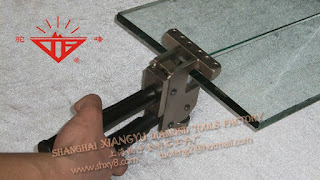Fibre
blanket moulds are good for free form moulds. The blanket can be cut
into shapes or crumpled. It does not have binders as the papers do,
so kiln wash is not necessary. Still, I have always sprinkled alumina
hydrate powder over the mould. You can then support the high spots
with kiln furniture – existing or custom made.
Pre-wetted
fibre blanket is available - Moist Pack is one brand name.
Or
you can make the mould yourself from fibre blanket and hardener. You
need:
- ceramic fibre blanket. It should be 3 mm or thicker, but 25 mm needs to be compressed when wet. It is possible to use two layers of 3 mm fibre blanket, but they do not stick together well unless thoroughly wetted.
- colloidal silica - often is called mould hardener or rigidiser. Paint this onto the fibre blanket liberally, both sides if possible.
The
rigidiser can be brushed on or sprayed on. Some people soak the
blanket in the rigidiser and then squeeze out the excess.
You
must protect the master with cling film, Vaseline, or other
waterproof separator. Be sure about whether you want a draping or
slumping mould, as the inside needs to be smoothest for a slumping
mould and the outside smoothest for a draping mould.
Press
the wet fibre blanket to the master. Then let it dry for a couple of
days to become stiff enough to remove from the master. Let the
negative dry for another period when out of the mould.
The
drying method for rigidised fibre mould depends a bit on the
structure from which you are taking the shape. If the shape is a
piece of glass you can heat slowly to about 300C, but you have to be
careful not to go much above that temperature to avoid the mould
sticking to the glass. When cool you can carefully remove the mould
from the glass and fire it to about 720C to cure it.
Other
materials should be able to withstand at least 400C if you are drying
in the kiln.
Materials that cannot be subjected to heat should be air dried. This will take a long time, possibly a week or more. The master should be coated with petroleum jelly or cling film to ensure the drying of the mould does not also cause it to stick to the master.
When
the mould is dry, put into the kiln and fire to around 760C to cure
the mould. You can fire fast, and after 10 minutes at 760C, you can
just turn the kiln off, as there is no possibility of thermal
shocking the mould. The point is to get the glass which has been in
suspension to soften and stick together. Upon cooling the mould will
be hard, as it is held together by the glass structure within the
fibre blanket.
Once
rigidised, you can sand the mould to refine the shapes. But you must
use dust mask as the dust and fibres are dangerous to your health. Do it out doors if possible. Otherwise a well ventilated room is
necessary. You can sand down the high spots and generally smooth the
mould to obtain a finer texture. Usually 100 grit sandpaper does the
job quickly and leaves a relatively fine surface texture. If
unhardened blanket is exposed during the sanding process, You can
add a mixture of the rigidiser and the "dust" from the
sanding to any holes, dimples or exposed unhardened fiber in the
mould Then re-apply rigidiser to the sanded areas, and cure the mould
at 760C again.
If
you are rigidising, you need a separator – kiln wash – either
powder or in a solution brushed on. A rigidiser does not burn off; it
fuses to itself within the mould material and makes it harder. The
resulting mould material will also be more brittle and should be
handled with some care. I.e., never pick up the mould by the edges or
with a piece of glass on top.
When
you are satisfied with the shape and texture, you apply the kiln wash
and fire.
The
rate of heating the kiln and the soak will depend on the complexity
of the shape of the mould and the thickness of the glass but there
are no concerns about the mould as it is not subject to thermal
shock.
With delicate treatment, the mould can be reused many times.
Two examples are shown here:
 |
| Lamp shade panel form |
 |
| This is a "free form" mould made to give the glass sheet the appearance of crumpled paper |

















